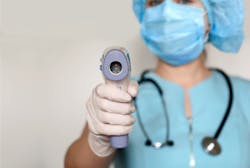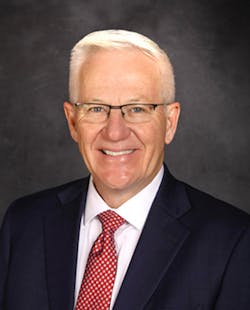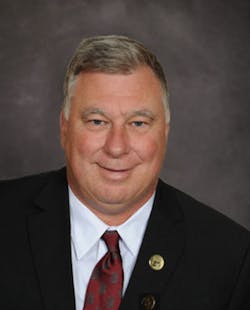Providing security in a healthcare setting has often been called diverse and complex – this type of environment presents numerous challenges to security systems integrators due to patient privacy concerns, the need to constantly maintain a clean workspace environment, and also because hospitals are open 365 days a year.
COVID-19 has made this environment even more complicated, as healthcare security directors shift gears to address the security issues immediately in front of them – ensuring patients, staff and contractors are safe to enter the premises, implementing measures to support a touchless environment, and leveraging existing technologies to patrol areas and support contact tracing.
These are unprecedented times and security integrators are serving as a valuable resource to healthcare customers who need to redefine security and safety protocols in ways never previously imagined.
“We are working closely with our healthcare customers to keep them informed and to educate them on the benefits of new solutions andScreening Visitors and the Impact on Jobsites
One of the biggest security changes is the adoption of stringent screening protocols for anyone entering a healthcare facility, whether it is an employee, patient or contractor. As part of the formal screening process, many facilities have implemented thermal imaging cameras that can detect an elevated skin temperature.
For employees at one hospital in New England, this means walking through a portal configured much like a traditional metal detector which scans each employee upon entering the building. “All of the employees go through this portal,” says David Alessandrini, VP of Boston-based Pasek Security. “We have another hospital looking to install wall-mounted tablets that have a series of questions that need to be answered first before a person is granted access.”
These digital displays, says Alessandrini, can also contain a QR code so that people can access the questions directly on their own smartphone instead of having to touch a device used by many different people.
Security systems integrators traveling to service healthcare clients also need to follow these heightened measures, which now include more restricted access to buildings – especially patient areas. Additionally, integrators need to more specifically map out and communicate areas where technicians need access to before coming on site, and of course, the technicians are required to wear Personal Protective Equipment.
“We now have to go through a comprehensive screening process before working on a healthcare security project,” says Renee Schwab, CEOCare Security, which works with dozens of hospitals in the Greater New York City area, has also seen more healthcare clients move onsite work to the overnight shift, which helps to minimize interactions with people within the hospital setting. This was not as prevalent prior to COVID-19, says Schwab.
At some healthcare facilities, Pasek Security technicians are now required to wear multiple layers of PPE – this includes gowns, double masks, and also a face shield. “They are taking PPE to the max as if we were directly taking care of the COVID-19 patients,” Alessandrini says.
Krumme says one healthcare customer, located in a different state than Cam-Dex Security’s headquarters, required some onsite project work this fall. However, that customer informed Cam-Dex Security it would impose its own five-day quarantine policy before allowing the technician to work on their property.
“The hospital had its own rule about quarantining and we had to let them know it wouldn’t work with how we had budgeted the project,” Krumme says. “But the customer told us they were willing to pay for that additional expense and it all worked out. It was important for us to abide by the rules and to keep our people safe.”
Security Technologies for a Safer Environment
Healthcare facilities are also adapting existing technologies and investing in new solutions to provide a safer, germ free environment. This includes using video surveillance to conduct virtual patrols instead of sending a security guard to patrol an area on foot.
Schwab explains that one facility has leveraged its existing surveillance system to help with contact tracing for when an employee tests positive for COVID-19. “Surveillance is being used to determine how much time someone has spent with another employee and to track who someone may have come into contact with,” Schwab says. “This is one unique approach we have seen with a surveillance system to help mitigate the spread of the virus.”
Perhaps one of the biggest technology adoptions in the healthcare setting is the implementation of more touchless devices. From touch-free door openers to intercom systems, hospitals are installing more solutions that require fewer touches or no touches at all. Prior to COVID-19, touchless door openers were more commonly found in clean and sterile areas of a hospital; however, these devices are now making their way into general hallways and common areas that are divided by a door.
“Many hospitals are looking to replace all of their handicap buttons with touchless buttons,” Alessandrini says. “Some of this started prior toIntercoms are also being installed in triage areas to help reduce the possibility of spreading germs created when a person speaks face-to-face with another individual, even when each person is wearing a mask. For example, intercoms have been installed in patient intake areas where plexiglass partitions exist, enabling would-be patients to communicate through a speaker instead of a small opening in a plexiglass barrier.
“We have seen an increase in these types of installations,” Schwab confirms. “The biggest trend we are seeing is that hospitals are willing to invest in solutions that limit contamination and sharing of germs.”
In just a few short months, security and safety measures within healthcare settings have gone through significant changes, yet despite these changes being adopted within a relatively short period of time they have made an impression on the industry.
“I think many of these safeguards and changes that healthcare systems have put into place will have a lasting impact,” Schwab says. “They are here to stay.”
About the Author
J. Matthew Ladd
Matthew Ladd
J. Matthew Ladd is the president and chief operating officer of The Protection Bureau, a CSAA Five-Diamond central station and security systems contracting company located in Exton, Pa., and a member of Security-Net, a network of some 19 independent companies located across the country.




